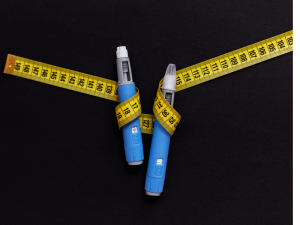Have you ever noticed your stomach twisting before a big event or your shoulders creeping up towards your ears when you’re stressed? That’s your body responding to your emotions. Feelings aren’t just in our heads—they show up physically, shaping the way we move, breathe, and even digest food. Understanding these signs can help us manage our emotions better and take care of our overall well-being.
The Mind-Body Connection
Our emotions and bodies are deeply connected. When something triggers an emotional response, our nervous system jumps into action. The autonomic nervous system (ANS) controls things we don’t have to think about, like our heart rate and digestion, and it plays a significant role in how emotions affect us physically.
• The Sympathetic Nervous System (SNS) – This is the “fight-or-flight” system, revving us up when we feel stressed, anxious, or angry. It speeds up our heart rate, tightens our muscles, and slows digestion—getting us ready to react.
• The Parasympathetic Nervous System (PNS) – This is the “rest-and-digest” system, which helps us relax, slows our heart rate, and promotes digestion. It kicks in when we feel safe, happy, or content.
When emotions become overwhelming or long-term—like chronic stress or sadness—they can throw this system off balance, leaving us feeling tense, exhausted, or sluggish.
Common Emotions and Their Physical Signs
Stress and Anxiety: The Tension Builders
Stress and anxiety can feel like a racing heart, tight chest, headaches, or a knotted stomach. The stress hormone cortisol rises, increasing inflammation and making us more prone to issues like high blood pressure or weakened immunity. Many people also unconsciously clench their jaw or hunch their shoulders when anxious.
Sadness and Depression: The Weight of Emotions
Have you ever felt physically heavy when you’re down? Sadness and depression can cause fatigue, aches, and sluggishness. Low serotonin levels—often linked to depression—can also affect digestion, leading to bloating or discomfort.
Anger and Frustration: The Heat of Emotion
Anger often makes the body feel hot—flushed skin, tense muscles, and a pounding heart. That’s due to the release of adrenaline and noradrenaline, priming us for action. Over time, frequent anger can contribute to high blood pressure and cardiovascular issues.
Fear: The Freeze or Flight Response
Fear triggers a surge of adrenaline, making our breathing shallow, our palms sweaty, and our body hyper-alert. Blood is redirected from digestion to muscles, preparing us to run or react. This is why fear can make us feel shaky or nauseous.
Happiness and Love: The Healing Emotions
Positive emotions like joy and love engage the parasympathetic nervous system, lowering stress hormones and releasing oxytocin, the “love hormone.” This not only strengthens social bonds but also helps reduce pain and promote relaxation.
The Role of the Vagus Nerve
The vagus nerve is key to emotional and physical health. It helps regulate our heart rate, digestion, and mood. When it functions well, we feel more emotionally balanced and physically resilient. Practices like deep breathing, humming, or even splashing cold water on our faces can stimulate the vagus nerve and promote calmness. Read my blog on the vagas nerve
How to Manage Emotions Through the Body
Since emotions show up physically, we can use the body to help regulate them. Here are some simple strategies:
• Deep breathing – Slows the heart rate and activates the relaxation response.
• Movement and exercise – Releases pent-up tension and boosts feel-good endorphins.
• Progressive muscle relaxation – Helps release stored stress in the body.
• Cold exposure – Splashing cold water on your face or taking a brisk walk outside can help reset the nervous system.
Our emotions don’t just exist in our minds—they live in our bodies, too. By paying attention to how emotions show up physically, we can learn to manage stress, release tension, and support our mental and physical health. The more we tune in, the better we can take care of ourselves from the inside out.









